Inside Queen Mary’s Bejeweled Dolls’ House
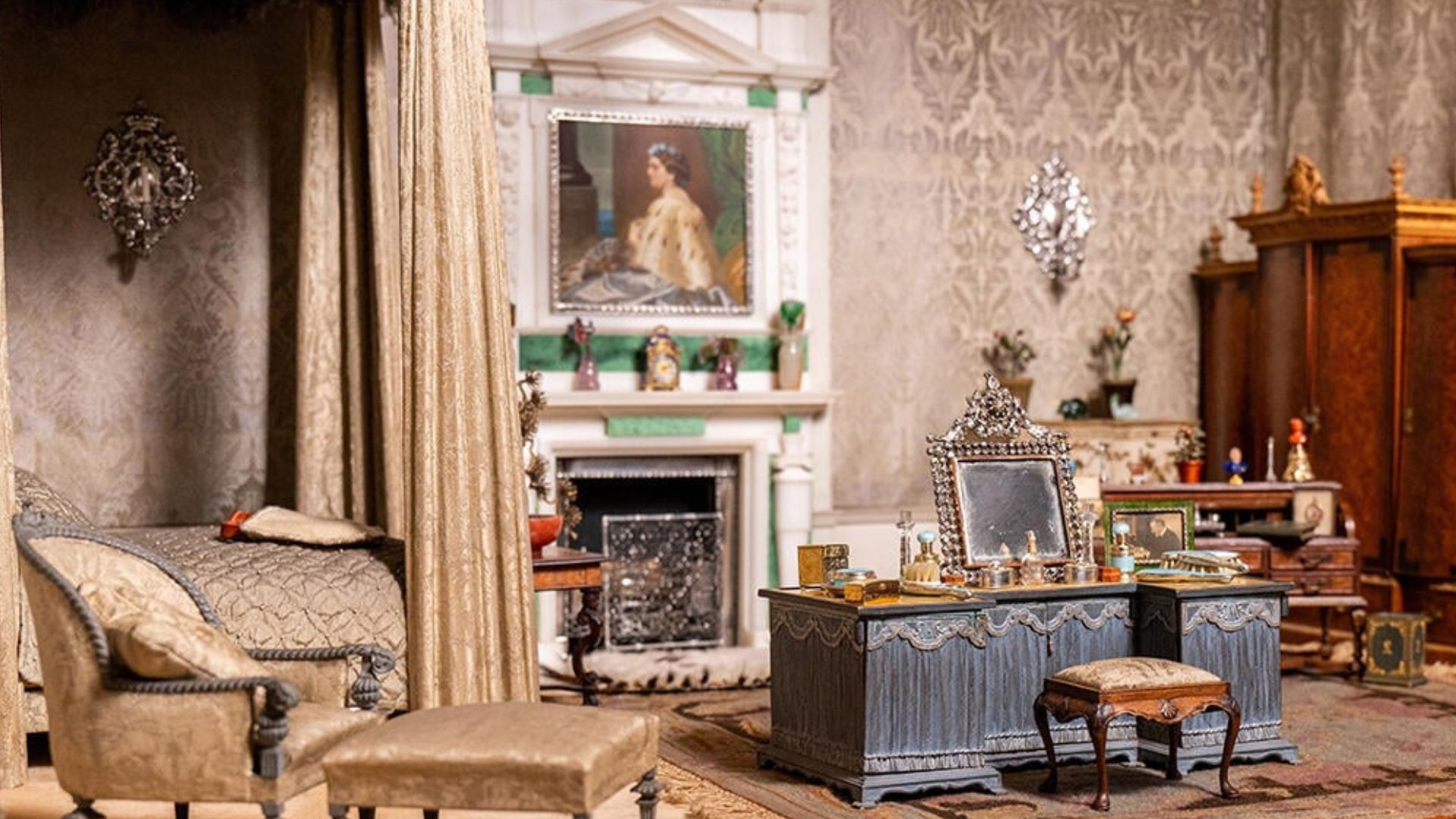
Queen Mary (of the United Kingdom), the grandmother of Her late Majesty Queen Elizabeth II, was renowned for her love of all things small and decorative.
In 1920, Princess Marie Louise, Queen Mary’s friend, and a cousin of her husband George V, decided to commission Sir Edwin Lutyens (who also designed the British ambassador’s residence in Washington DC, where Princess Diana stayed when she famously danced with John Travolta in 1985) to design a sumptuous dolls’ house for Her Majesty. This year marks the centenary of when the impeccably presented scaled-down Edwardian townhouse was completed and given to Queen Mary.
The life-like London four-story townhouse was built between 1921 and 1924 and given to Her Majesty as a gift from the people of the United Kingdom. It was decorated and filled with contributions from over 1500 of the well-known ‘brands’ of the day, including Singer Sewing Machines and Hoover Vacuums. Artists such as Dorothy Cohen painted paintings and murals, displayed on the walls. There is a well-stocked wine cellar, a garage full of contemporary cars, and a library of books from the important authors of the day including Sherlock Holmes creator Sir Arthur Conan Doyle, plus a grand piano with functioning ivory keys.
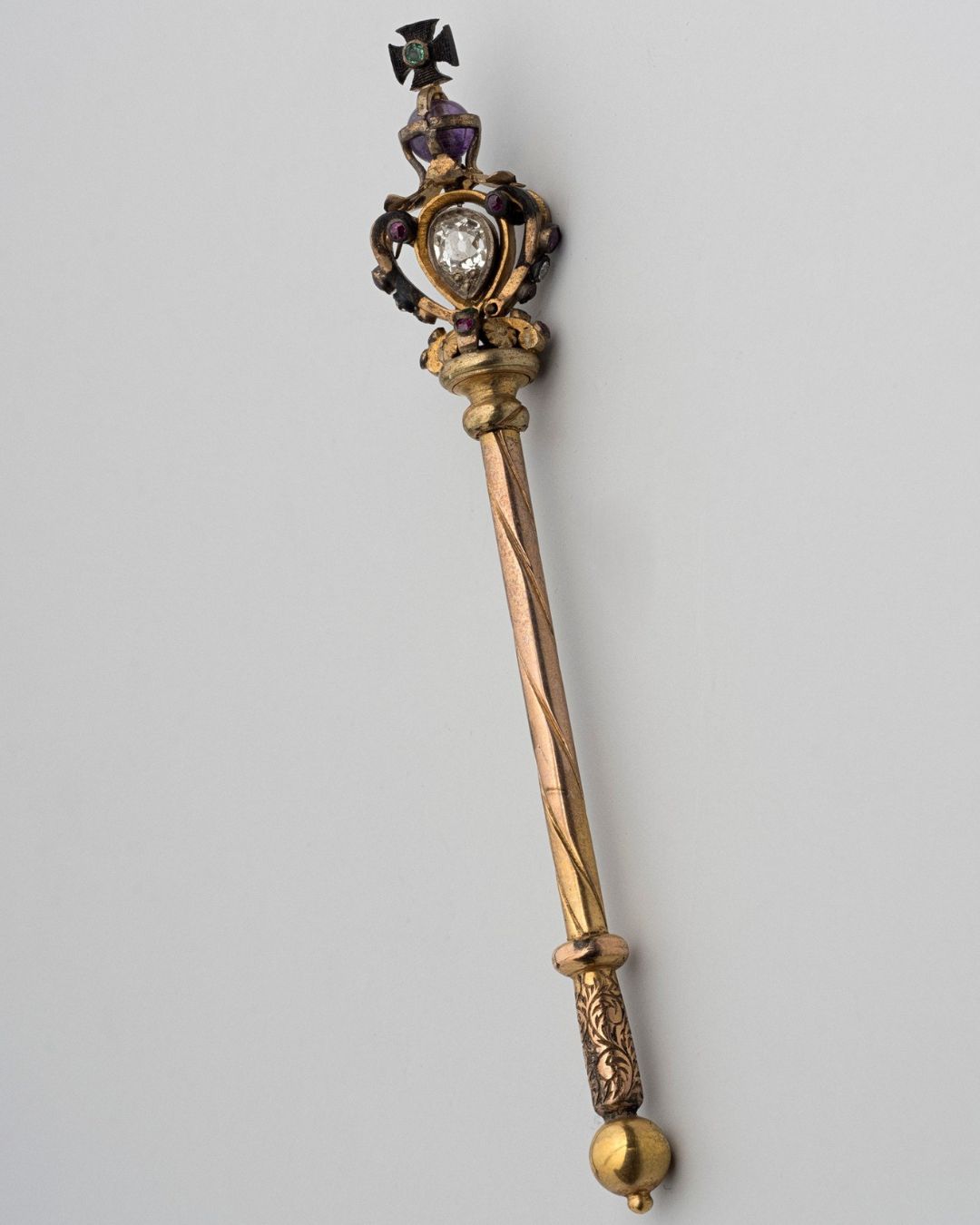
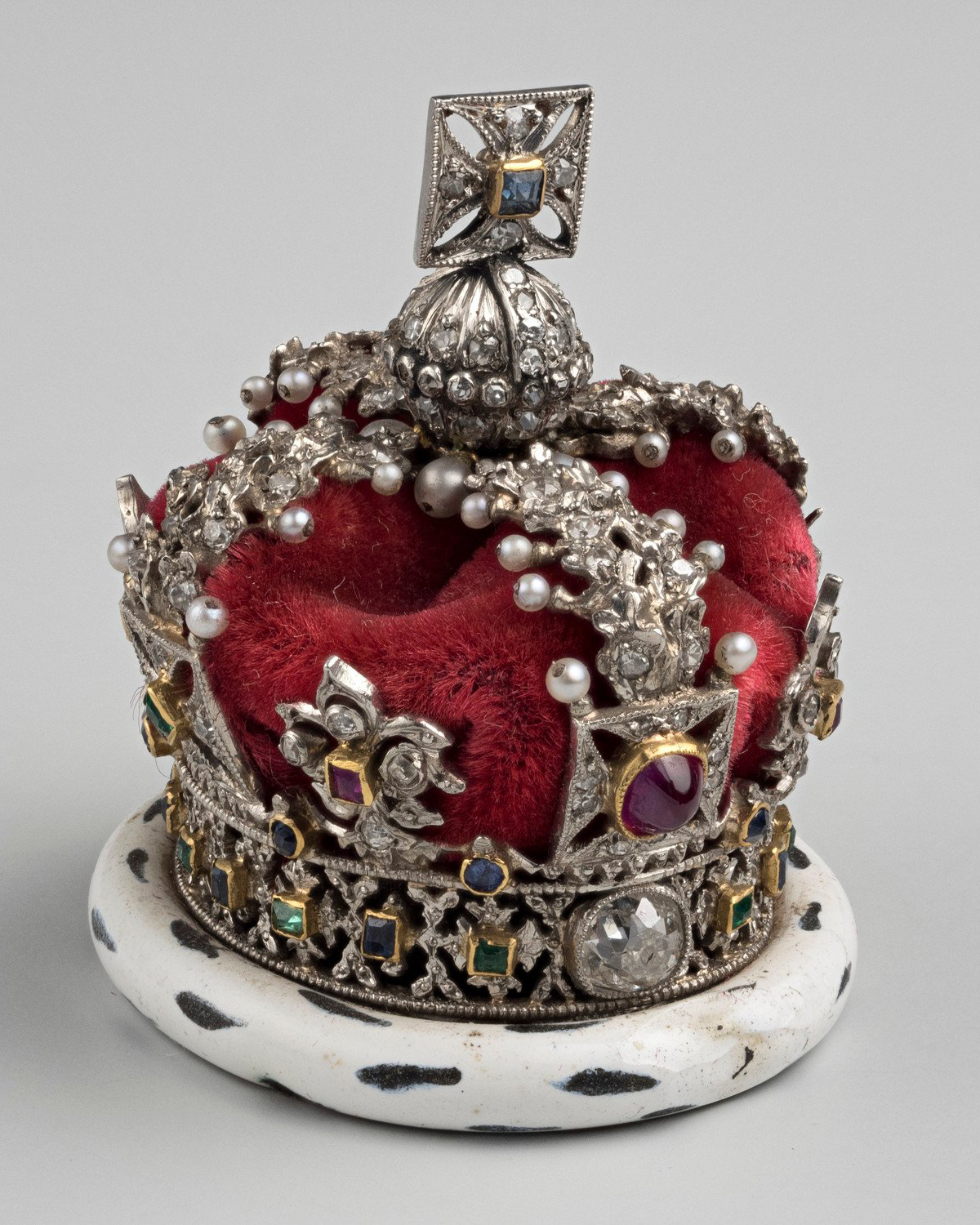
But it is the miniature Crown Jewels, sitting securely in the miniature Strong Room, that we’re here for, which are set with natural diamonds – as only toy Crowns created for a Queen and Empress should be. To include natural diamonds in a dolls’ house, might seem extravagant – but let’s not forget that this was a gift to the Queen of England, who at that time was also Empress of India and Queen of England’s dominions, which included much of Africa, the diamond-rich countries.
The collection, made by silversmith Henry George Murphy, comprises most of the jewels and regalia we saw last May for the Coronation of Charles III, Queen Mary’s great-grandson.
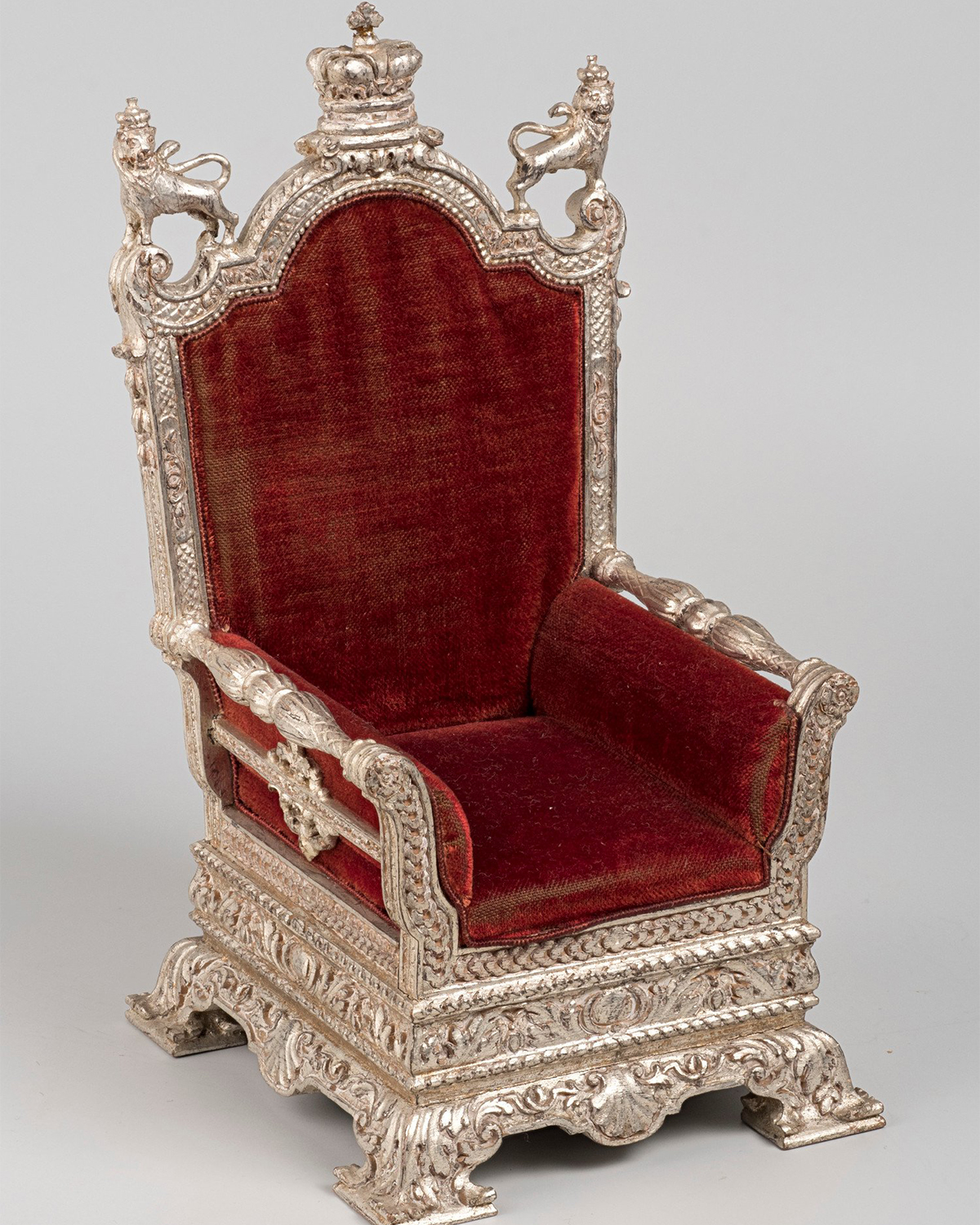
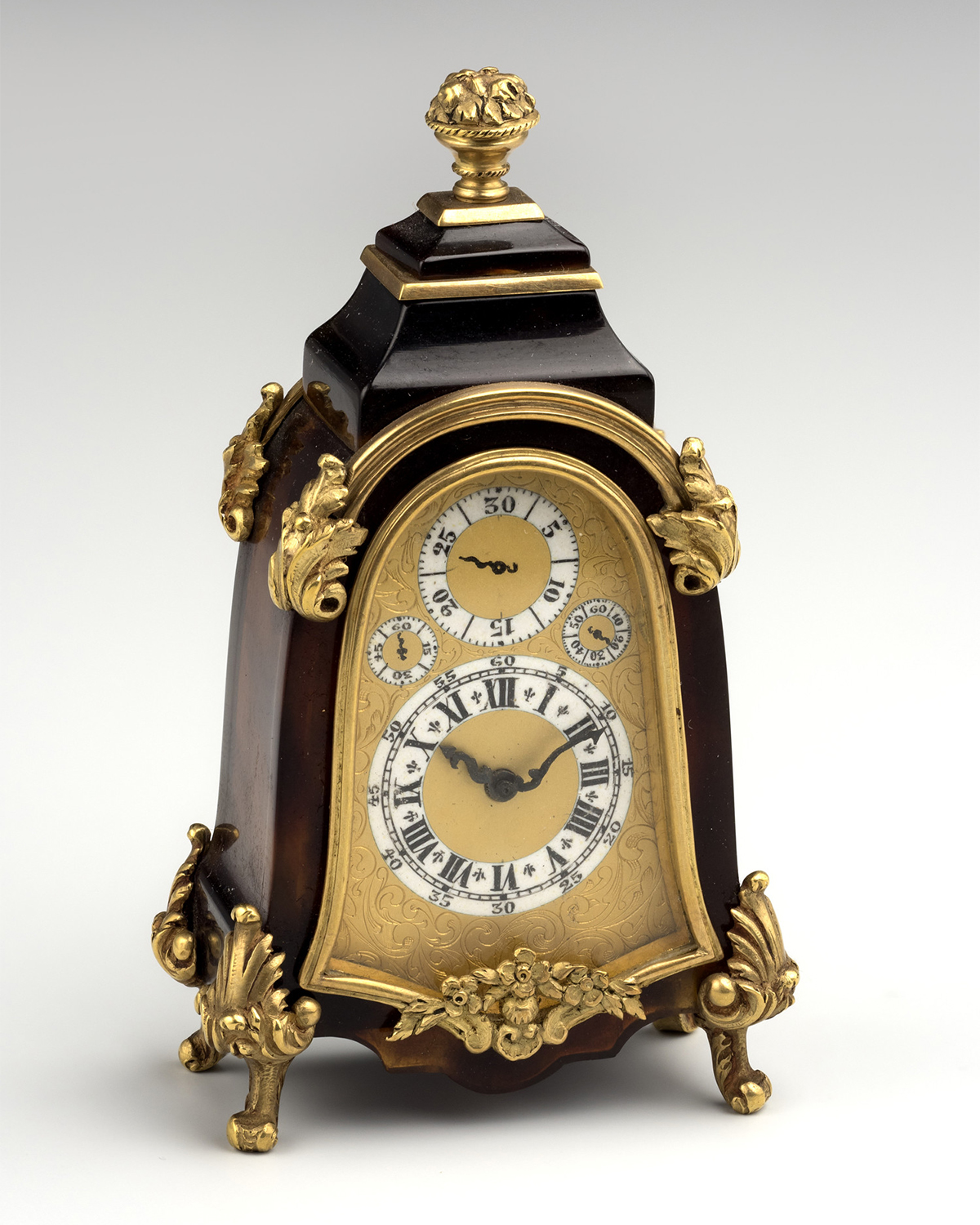
Garrard’s role as Crown Jeweller is replicated by Murphy in the 3cm high Imperial State Crown, made in silver and set with diamonds, rubies, sapphires, emeralds, and seed pearls; Queen Mary’s Crown, also in silver, with diamonds – taller than the King’s at 3.6cm and with more diamonds too (well it is HER dolls’ house after all!).
An 8cm long Sceptre set with a miniature pear-shaped diamond, rubies, an emerald, and an amethyst; and two 2cm Orbs, which represent those that belong to the Sovereign and the Queen Consort, are in silver gilt and include an amethyst, rubies, emeralds, sapphires, seed pearls and diamonds. Two tiny thrones, matching those designed by Lutyens for the Imperial Durbar, when King George V and Queen Mary were crowned Emperor and Empress of India in Delhi in December 1911, also take pride of place in the incredible architectural objet d’art.
There are several exquisite desk and wall clocks, and a painted screen, by Cartier. The fine jeweler Faberge created a miniature Pine tree, with diamond blooms, sitting in a pot made of rhodolite, as well as a tiny nephrite mouse with rose cut diamonds as its eyes.” This latter objèt was donated by Grand Duchess Xenia of Russia, another cousin-in-law of Queen Mary, who was Queen Victoria’s granddaughter.
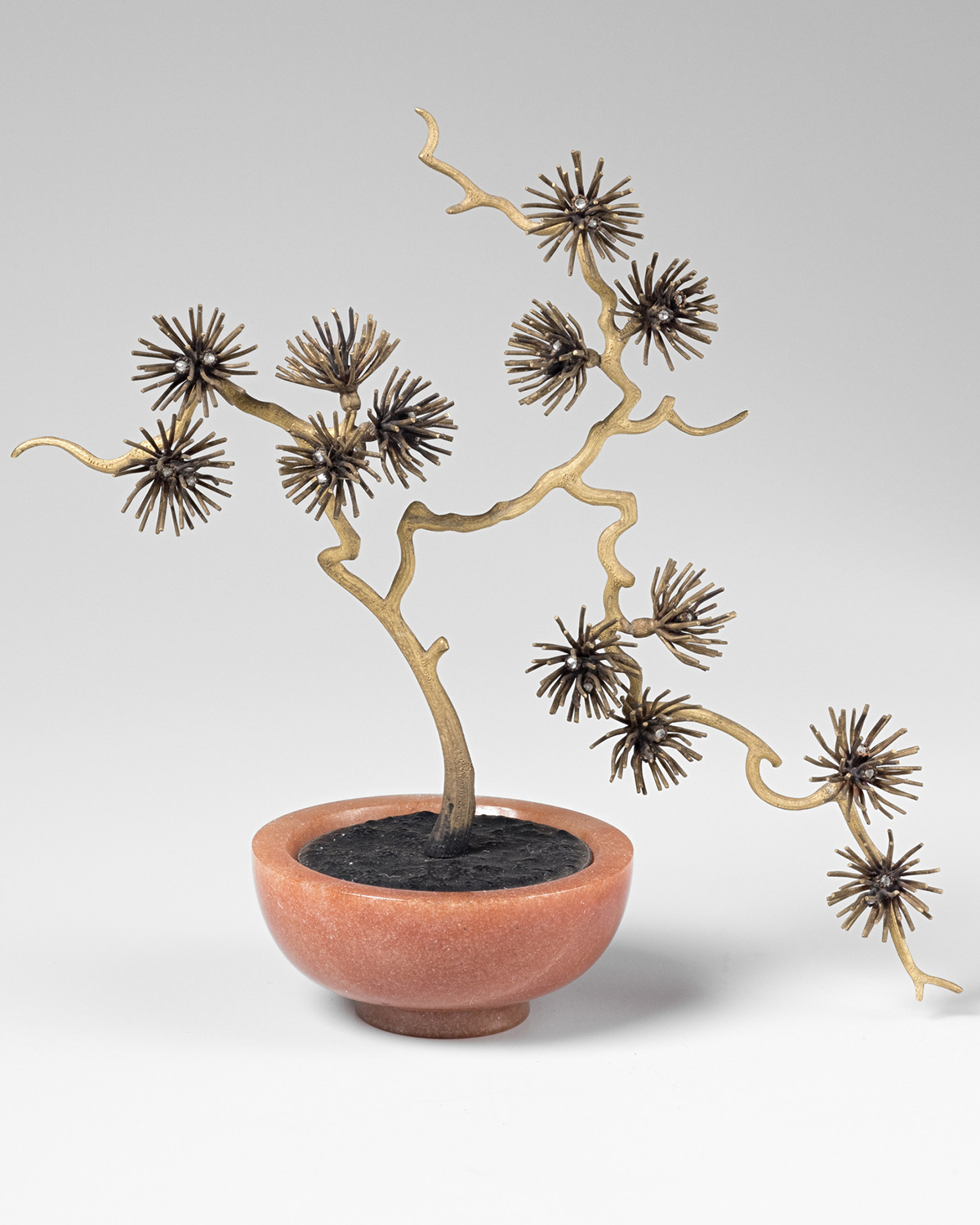
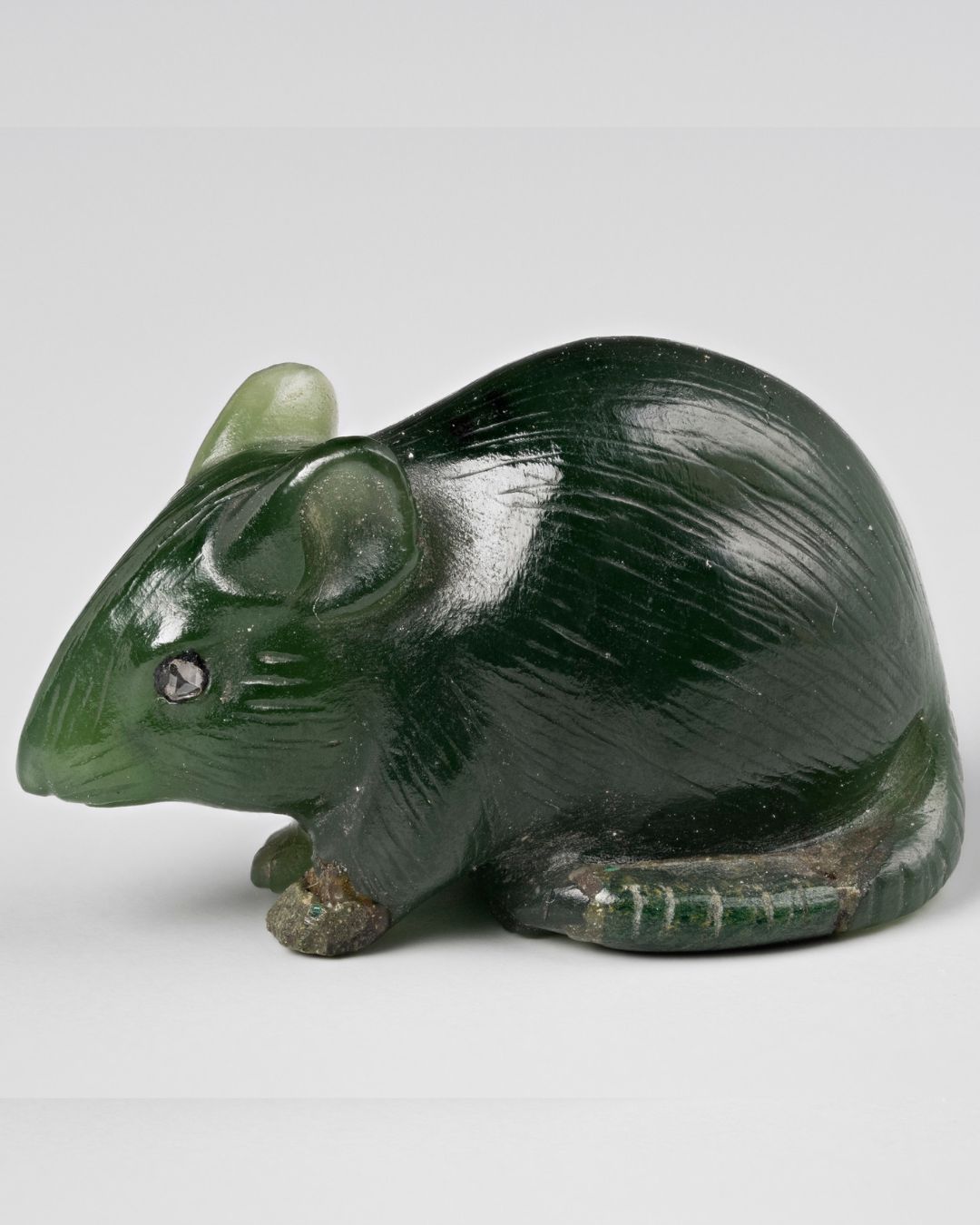
The centenary exhibition of Queen Mary’s Dolls’ House and its items is included with a ticket to Windsor Castle throughout 2024.
